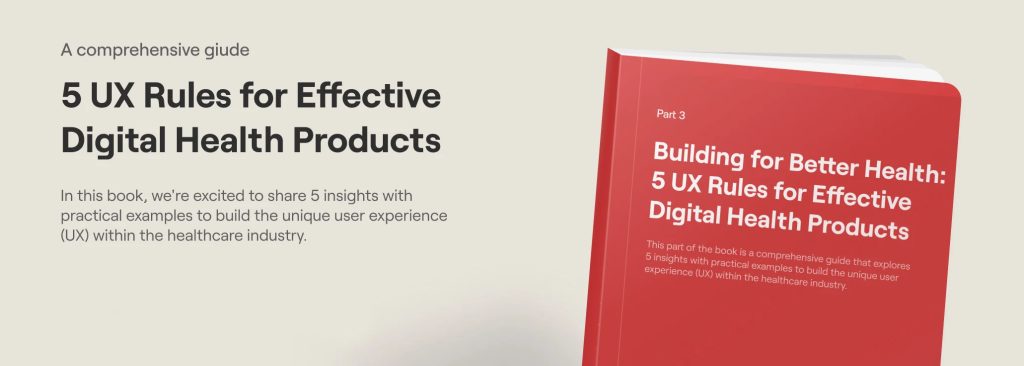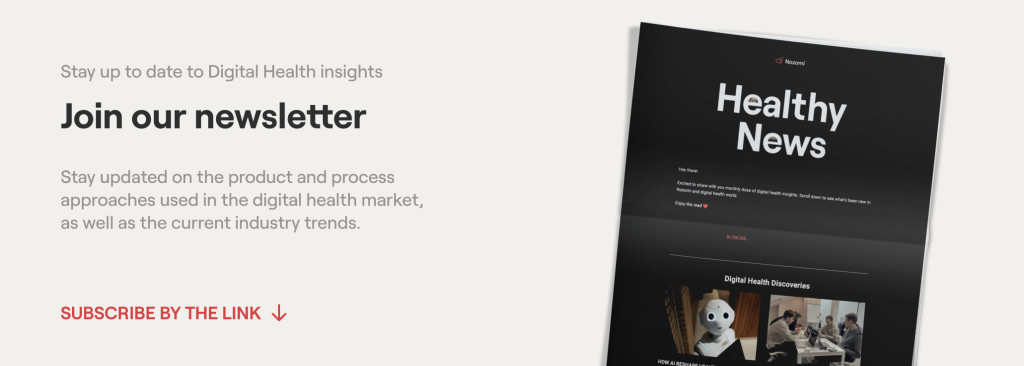Our company jokes that the FDA is the most frightening institution on the planet. And the reason is simple and straightforward: it has a strict app selection.
In fact, such a rigorous selection process is entirely adequate because it is uncertain how a specific application will affect the user’s health.
Well, the fears and uncertainty towards unsuccessful encounters with the FDA emanating from other companies’ experiences aren’t necessarily a bad thing. If you comply with the FDA’s rules and prepare responsibly, the application will surely be approved effortlessly.
Let’s define it today using a stunning example — an application that positions audio therapy at the forefront of everything.
At first glance, you might believe that the FDA can immediately place the project under their inspection and distress the application developers for an extended period of time because of their idea. After all, audio therapy is relatively novel, and some people still have reservations about it.
Of course, the primary reason for the app’s development is cognitive distortions that happen nowadays quite often; as you know, meditations generally have a proven and trusted ability to calm people and reduce the impact of stress.
I. So let’s start from the beginning: with a classification for medical applications utilizing sound processing.
To meet the requirements of the FDA, you need to have the correct classification. Medical devices are classified based on their level of risk, with Class I devices posing the lowest risk and Class III devices posing the highest. Medical applications with audio processing usually classify as Class II devices.

II. Premarket Review: let’s move on to the applications from which we choose.
Once your app is classified, you must undergo a pre-sale verification process to demonstrate its safety and effectiveness. It may include sending a premarket notification (Regulation 510(k)) or a premarket approval (PMA) application, depending on the level of risk associated with your application.
Premarket Notification (510(k)) is a process where a manufacturer submits a premarket notification to the FDA to verify that their device is equivalent to a legally marketed device already on the market. If the FDA determines that the device is alike, it can go on the market without further review.
Premarket Approval (PMA) is the most stringent type of device application required by the FDA. High-risk devices, such as implantable devices, life-sustaining or life-supporting devices, or devices not previously cleared or approved, require PMA. The PMA process mandates clinical trials to demonstrate substantial evidence of the device’s safety and effectiveness.
Healthcare apps that use audio treatment are typically classified as Class II devices and may require premarket notification (510(k)) if the device is equivalent to a legally marketed device already on the market. A Premarket Approval (PMA) may be required if the device is deemed high-risk.
III. In the meantime, we are assisting with clinical trials.
They are required to demonstrate the application’s security and effectiveness. As part of the Premarket Review process, clinical trial data must be submitted to the FDA.
And even after successful approval, you should also keep them in focus. For example, the Femtech team of the Flo application using audio treatment conducts medical research before releasing a new feature or content.
IV. Marking requirements.
Audio treatment medical application labelling should inform patients about the application’s intended use and any associated risks. The labelling must also indicate the application’s classification, regulatory status, and contact information for the manufacturer.
Be Aware of Exemplary Manufacturing Practices.
To ensure quality and consistency, healthcare apps with audio treatment must be manufactured per exemplary manufacturing practices (GMPs).
For healthcare apps with audio treatment, GMPs may correlate with software design, development and testing, data protection, data management, security and privacy. GMPs also cover the processes for designing, testing, and releasing updates to ensure that the app remains safe and effective.
Additionally, GMPs may require the use of secure and validated production processes, as well as the establishment of a quality management system.
Several patterns prevail in most of these applications, for example:
1. Quality control. These are processes that ensure the product is free of contamination and meet the specifications and high production standards.
2. Documentation. It includes comprehensive and accurate records of all production and quality control processes.
3. Validation. These are procedures with the primary goal of verifying that the processes used to manufacture the medical application meet the required specifications.
4. Device design and development. It entails comprehensive documentation of the design and development process, including user needs, risk analysis, and design verification.
By the way, the key success of all Effective Digital Health Products lies in adhering to specific UX Rules, such as utilizing behavioral psychology, a technique employed by companies like Apple.
We’ve even compiled a separate book on all these methods, which you can download below to delve deeper into the subject.

5 UX Rules that improve User Engagement & Retention in Digital Health apps
5. Device maintenance and recalibration. These are procedures devised to maintain the performance and accuracy of the medical application over time.
6. Data security and protection of sensitive information. These are measures to ensure user data is highly protected from unauthorized access or breaches.
V. Post-Market Surveillance.
Once the app has been approved and released to the public, you should keep track of its performance and abide by the FDA’s post-market surveillance requirements. It could entail running more clinical trials, submitting periodic reports, and responding to adverse event reports.
VI. Finally, do not limit your attention solely to the FDA.
In fact, the FDA is not the foremost danger 🙂 The users who will utilize the application will pose the most challenging test.
Remember how we mentioned earlier that some people are skeptical of new ideas? And there are still people who appear interested in using it but then get confused with the application or fail to see the result after the first audio session and decide to give up on it.
1. The target audience needs a UX that explains how the product works and encourages them to monitor progress (even progress needs to be visualized so that a person wants to log into the application daily).
2.In order for your product to withstand a large number of users, it is important that you create a platform with technical scalability. After all, when we convince our target audience segments to stay with us, we need to make sure that the application copes with audience growth.
It is a fundamental basis that should not be underestimated whilst also waiting for FDA approval 🙂
And if you want to build a product which brings positive outcomes, It is necessary to have a clear understanding of how the UI/UX design should work and how to do it in a way that shows care and value.
But that’s only one component, another one – is technology. No matter how awesome you make your product look, if the development is poor and it starts glitching and lagging, all your hard work goes down the drain.
And to stay updated on the product (CX, UI, UX, Engineering) and process approaches used in the digital health market, as well as the current industry trends – subscribe to our monthly newsletter. We provide more detailed insights into creating Digital Health products, their components, and how to convince users to use healthcare products.






